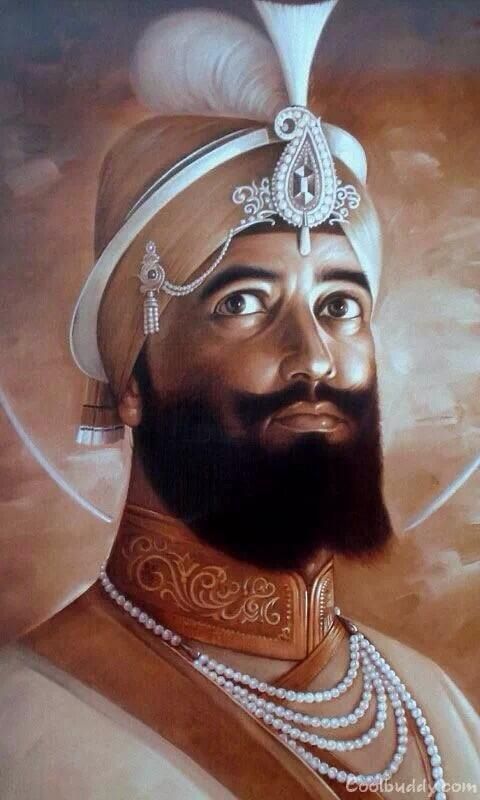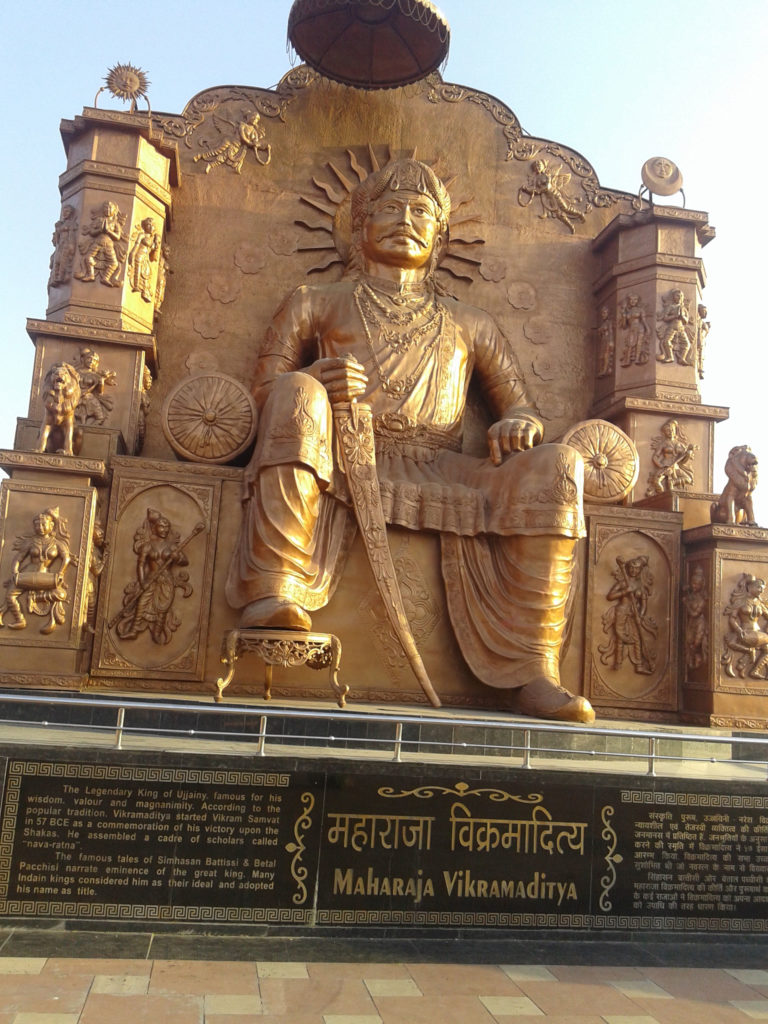
Some members of the sangat (i.e. congregation) may be confused by issues related to the Sikh calendar. The solution to confusion is research and knowledge. Sikhi is not about blind faith. It is about enlightened faith. You can verify the below information by doing your own research using Google search or a library.
Consider the following example of calendar-related issues: one Gurdwara may state that Guru Gobind Singh Ji’s Parkash Diwas (i.e. physical birth date) falls on January 5th every year, while another Gurdwara may state that it falls on a different date each year.
First, to state the obvious, we may gather in the sangat to remember significant events not only on the actual anniversary date of the event, but on days near that date (e.g. we often remember the shaheedi of the Sahibzaade for many days in the month of Poh). This is not a point to debate. We may gather in the sangat to remember significant events at any time.
The confusion is about exactly which date marks the Parkash Diwas. While different Gurdwaras state different dates, logic would suggest there could only be one Parkash Diwas for Guru Gobind Singh Ji in the month of Poh.
Let’s consider which calendars are used in the world. The Julian calendar was proposed by Julius Caesar and was the predominant calendar in the Roman world. Later, Pope Gregory made a decision to adjust the Julian calendar, and the resulting Gregorian calendar is what the world largely uses now. The Gregorian calendar is a solar calendar. That is, its dates are based on the revolution of the earth around the Sun.

There is also the Bikrami calendar (also known as Vikram Samvat). This calendar is named after King Vikramaditya, who ruled in India over 2,000 years ago. This is a lunisolar calendar. That is, its dates are based on both the revolution of the moon around the earth and the revolution of the earth around the sun.
The Bikrami calendar was the predominant calendar in India since ancient times. During the British colonial rule of the Indian subcontinent, the Gregorian calendar was adopted. Nevertheless, the Bikrami calendar continues to be used by Hindus and Sikhs to mark significant dates.
Months in the Bikrami calendar start with Sangrand. The word Sangrand comes from the Sanskrit word sankranti, which marks the movement of the sun into the next rashi according to Indian astrology. We call the particular day that happens Sangrand; that is the first day of a month in the Bikrami calendar. Of course, Guru Sahib took us out of the practice of living our lives according to superstition. You’ll note that Guru Sahib blessed us with Barah Maha in Gurbani, giving us faith-based guidance on what to do in each month (e.g. meditate on the Lord).
For hundreds of years since Guru Gobind Singh Ji left their body, all samprada (lineages) of the Sikh panth continued to mark significant dates according to the Bikrami calendar. Relatively recently, an individual proposed that we should create a revised calendar that has fixed dates. If we consider this issue even only on a scholarly level, fixing dates makes no sense. Supporters of the proposed calendar suggest that we should fix the dates of Sangrand. Considering the definition of Sangrand explained above, this is impossible.
To clarify why this is so, let’s look in particular at Guru Gobind Singh Ji’s prakash diwas. The proposed calendar suggested that in the year of Guru Gobind Singh Ji’s birth, it was the 23rd day of the month of Poh. It’s a challenge to try to then fix the date of Guru Sahib’s birth in the Gregorian calendar, given that Sangrand moves around each year. What supporters of this proposed calendar did to deal with this logical roadblock was to declare January 5th the parkash diwas, count back 23 days from there, and say that this day should be declared Sangrand. This supposed solution still didn’t deal with the fact that this day was not actually Sangrand (consider again the definition of Sangrand above). As such, the basis for fixing dates for the proposed calendar is false.
The correct way to note Guru Gobind Singh Ji’s parkash diwas is not the 23rd day of Poh, but Poh sudi 7 (i.e. the 7th day after the new moon in the month of Poh).
We should be aware of various points as we consider the Sikh calendar.
- Gurbani refers to aspects of the Bikrami calendar. Refer, for example, to this line in Chaupai Sahib:
ਸੰਬਤ ਸੱਤਰਹ ਸਹਸ ਭਣਿੱਜੈ || ਅਰਧ ਸਹਸ ਫੁਨਿ ਤੀਨਿ ਕਹਿੱਜੈ|| ਭਾਦ੍ਰਵ ਸੁਦੀ ਅਸਟਮੀ ਰਵਿਵਾਰਾ||
(It was the Bikrami Samvat 1753; this book was completed on the banks of Sutlej on Sunday, the eighth Sudi of the month of Bhadon) - Dates were marked even during the time of the Gurus according to the Bikrami calendar. Consider that Guru Gobind Singh Ji was incredibly well educated, learning a wide range of languages. Maharaj could have decided to adopt a different calendar, selecting dates in a solar calendar that are fixed so that they don’t change each year. Guru Sahib did not. We should not fall into manmat (self-willed thinking), deciding that Guru Sahib should have made a different decision and that we should revise it.
- It is errant to say that Sikhs shouldn’t follow the Bikrami calendar since that would make us dependent on Hindu pandits to tell us when our significant dates fall. No individual, Hindu, Sikh or otherwise has control over astronomy. Calendars are simply a way of dividing time. The Bikrami calendar was used by Sikhs since during the time of the Gurus since that was the predominant calendar in India at the time. The Gurus could have decided to set significant events in Sikh history to always be on a fixed date according to a solar calendar like the Gregorian calendar. Guru Sahib accepted the Bikrami calendar.
Additional resources
Lecture by Sardar Gurcharanjit Singh Lamba of Sant Sipahi magazine
Lecture by Giani Sant Singh Maskeen
An explanation in gurmukhi by Bhai Prem Singh Masuta (New York City)
ਵਾਹਿਗੁਰੂ ਜੀ ਕਾ ਖਾਲਸਾ, ਵਾਹਿਗੁਰੂ ਜੀ ਕੀ ਫਤਹ!
ਸਭਨਾਂ ਨੂੰ ਦਸਮੇਸ਼ ਪਿਤਾ, ਗੁਰੂ ਗੋਬਿੰਦ ਸਿੰਘ ਸਾਹਿਬ ਜੀ ਦੇ ਪਰਕਾਸ਼ ਦਿਹਾੜੇ ਦੀਆਂ ਲੱਖ ਲੱਖ ਵਾਰ ਵਾਧਾਈਆਂ ਜੀ ।
ਅੱਜ ਪੋਹ ਸੁਦੀ ਸੱਤਵੀ ਹੈ, ਜੀ
ਇਹ ਦਿਹਾੜਾ, ਗੁਰੂ ਗੋਬਿੰਦ ਸਿੰਘ ਜੀ ਦਾ ਇਸ ਸੰਸਾਰ ਵਿੱਚ ਪਰਗਟ ਹੋਣ ਲਈ, ਅਕਾਲ ਪੁਰਖੁ ਜੀ ਨੇ ਚੁਣਿਆ ਸੀ ।
ਫਿਰ ਕਿਸ ਨੂੰ ਹੱਕ ਹੈ ਕਿ ਹੋਰ ਕੋਈ ਦਿਨ ਚੁਣੇ , 5 ਜਨਵਰੀ ਜਾਂ ਕੋਈ ਹੋਰ ਦਿਨ ।
ਗੁਰੂ ਨਾਨਕ ਦੇਵ ਮਹਾਰਾਜ ਦੇ ਪਰਗਟ ਹੋਣ ਸਮੇਂ , ਇਸਾਈ ਕੈਲੰਡਰ ਸ਼ੁਰੂ ਹੋਇ ਨੂੰ 1469 ਸਾਲ ਹੋ ਚੁੱਕੇ ਸੀ ।
ਕਿਸੇ ਵੀ ਗੁਰੂ ਸਾਹਿਬ ਨੇ ( ਜਨਵਰੀ ਤੋਂ ਦਸੰਬਰ ਤੱਕ) ਨਹੀਂ ਵਰਤਿਆ । ਬਲਕਿ ਬਾਰਹ ਮਾਹਾ ਨਾਮ ਦੀ ਬਾਣੀ , ਦੋ ਵਾਰੀ ਉਚਾਰਨ ਕੀਤੀ, ਚੇਤ ਮਹੀਨੇ ਤੋਂ ਹੀ ਆਰੰਭ ਕੀਤੀ ।
ਹੁਣ ਜਦ ਕਿ ਪੋਹ ਸੁਦੀ 7, 13 ਜਨਵਰੀ ਨੂੰ ਹੈ, ਤਾਂ ਪਰਕਾਸ ਦਿਹਾੜਾ, ਪਰਕਾਸ਼ ਹੋਣ ਤੋਂ ਪਹਿਲਾ ਕਿਸ ਤਰਾਂ ਮਨਾਇਆ ਜਾ
ਸਕਦਾ ਹੈ ਜੀ ?
ਸੁਦੀ ਤੇ ਵਦੀ, ਹਰ ਇਕ ਮਹੀਨੇ ਹੁੰਦੀਆਂ ਹਨ, ਜੀ ।
ਮੱਸਿਆ ਤੋਂ ਅਗਲਾ ਦਿਨ ਪਹਿਲੀ ਸੁਦੀ, ਪੂਰਨਮਾਸੀ ਤੋਂ ਅਗਲਾ ਦਿਨ ਪਹਿਲੀ ਵਦੀ ।
ਇਸ ਲਈ ਅੱਜ ਪੋਹ ਸੁਦੀ ਸੱਤਵੀਂ ਹੈ , ਜੀ
ਵਾਹਿਗੁਰੂ ਜੀ ਕਾ ਖਾਲਸਾ, ਵਾਹਿਗੁਰੂ ਜੀ ਕੀ ਫਤਹ !
Shiromani Gurdwara Parbandhak Committee Calendar
The Shiromani Gurdwara Parbandhak Committee (SGPC) currently uses the traditional Bikrami calendar as the official calendar for Sikhs. It can be found in a Gurmukhi-only PDF (3 MB) or in both English and Gurmukhi on this web page.
Image credit for Raja Vikramaditya photo: By NehalDaveND – Own work, CC BY-SA 4.0, Link


0 Comments